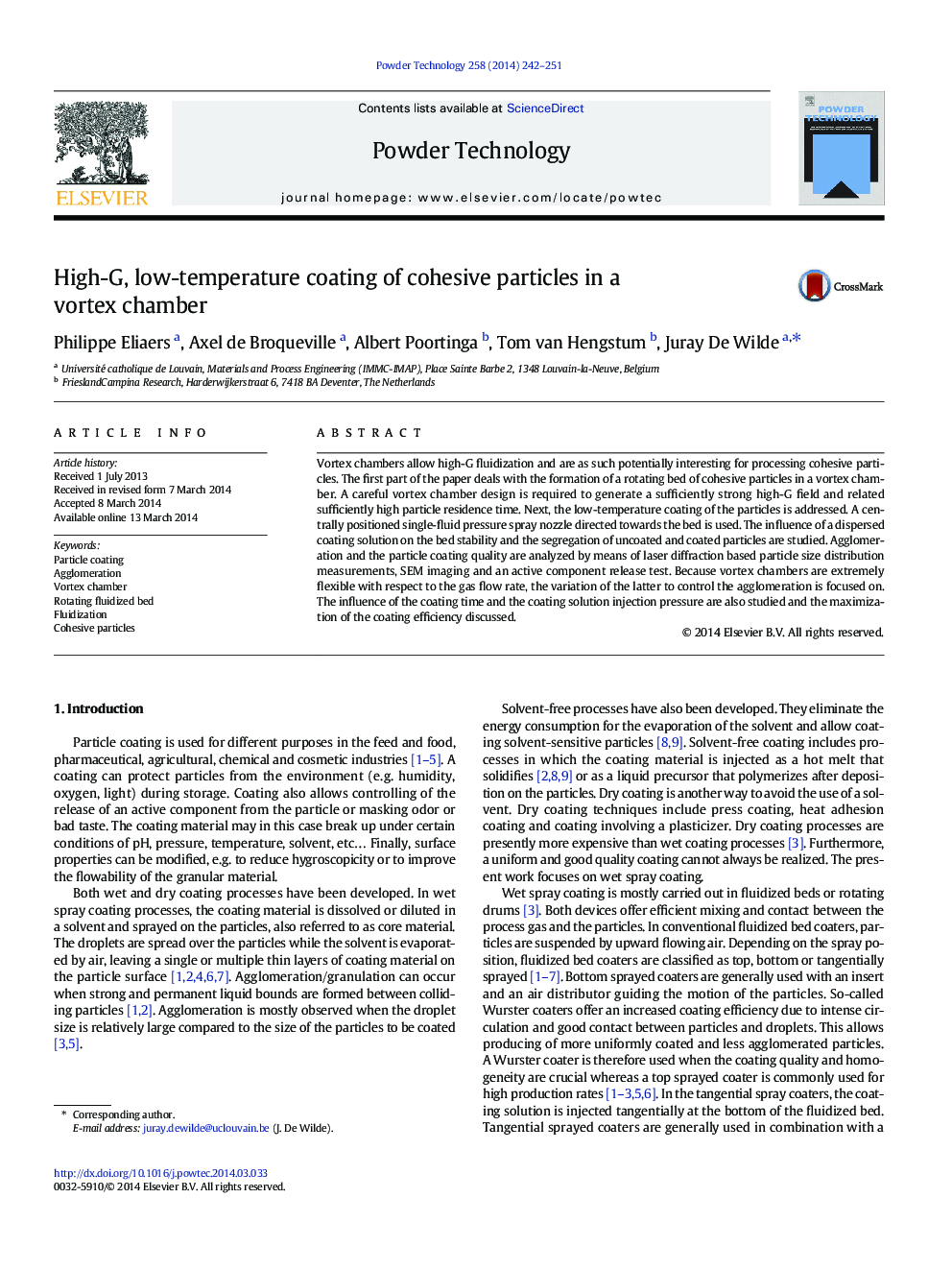| Article ID | Journal | Published Year | Pages | File Type |
|---|---|---|---|---|
| 236088 | Powder Technology | 2014 | 10 Pages |
•High-G fluidization cohesive particles in vortex chamber possible.•Low-temperature coating cohesive particles in vortex chamber demonstrated.•Effect coating solution feed rate and coating time on particle bed stability studied.•SEM imaging and an active component release test show good quality coating.•PSD and SEM show agglomeration, but controllable by means of the gas flow rate.
Vortex chambers allow high-G fluidization and are as such potentially interesting for processing cohesive particles. The first part of the paper deals with the formation of a rotating bed of cohesive particles in a vortex chamber. A careful vortex chamber design is required to generate a sufficiently strong high-G field and related sufficiently high particle residence time. Next, the low-temperature coating of the particles is addressed. A centrally positioned single-fluid pressure spray nozzle directed towards the bed is used. The influence of a dispersed coating solution on the bed stability and the segregation of uncoated and coated particles are studied. Agglomeration and the particle coating quality are analyzed by means of laser diffraction based particle size distribution measurements, SEM imaging and an active component release test. Because vortex chambers are extremely flexible with respect to the gas flow rate, the variation of the latter to control the agglomeration is focused on. The influence of the coating time and the coating solution injection pressure are also studied and the maximization of the coating efficiency discussed.
Graphical abstractFigure optionsDownload full-size imageDownload as PowerPoint slide
